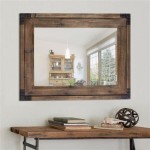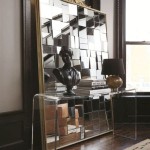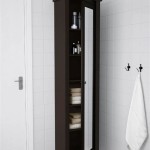Mirror Backing Paint Repair
Mirrors, with their reflective surfaces, play a crucial role in both decorative and functional applications. From enhancing interior design to providing crucial visibility in vehicles, their integrity is essential. The reflective coating on the back of a mirror, often a layer of silver or aluminum protected by a layer of paint, is susceptible to damage over time. This damage, whether from environmental factors, physical impact, or manufacturing defects, can compromise the mirror's reflectivity and overall appearance. Repairing the backing paint is often a viable solution to restore functionality and aesthetics without requiring complete mirror replacement.
Identifying the Damage
Before undertaking any repair, assessing the extent and type of damage is crucial. Common issues include scratches, chips, flaking, and discoloration. Scratches can be superficial, affecting only the paint layer, or deeper, penetrating the reflective coating. Chips, often resulting from impact, can expose the underlying glass and compromise the mirror's structural integrity. Flaking paint, a sign of deterioration, can lead to further damage if left unaddressed. Discoloration, frequently caused by moisture or chemical exposure, can manifest as dark spots or a hazy appearance, diminishing reflectivity.
Preparing the Mirror for Repair
Proper preparation is essential for a successful repair. The damaged area should be thoroughly cleaned to remove any dirt, grease, or loose paint. Using isopropyl alcohol or a specialized glass cleaner is recommended. For chipped or flaked areas, gently remove any loose fragments with a razor blade or fine-grit sandpaper. Be careful not to scratch the surrounding undamaged area during this process. Masking tape can be applied around the damaged area to protect the surrounding mirror surface and ensure a clean repair.
Choosing the Right Repair Materials
Selecting the appropriate repair materials is crucial for achieving a lasting and effective repair. Specialized mirror backing paint is available, formulated to adhere to glass and provide the necessary protective and reflective properties. These paints typically come in silver or aluminum to match the original reflective coating. For smaller scratches or chips, touch-up pens designed specifically for mirror repair can be a convenient option. Consulting product specifications and manufacturer recommendations is essential to ensure compatibility and achieve optimal results.
Applying the Repair Paint
Applying the repair paint requires precision and patience. For larger areas, using a small brush or an aerosol spray can ensure even coverage. Multiple thin coats are generally recommended, allowing each coat to dry completely before applying the next. This approach minimizes the risk of runs or drips and promotes a smooth, even finish. For smaller repairs using a touch-up pen, apply the paint carefully to fill the damaged area without overflowing onto the surrounding mirror surface. After application, allow the paint to dry completely according to the manufacturer's instructions.
Protecting the Repaired Area
Once the repair paint has dried, protecting the repaired area from further damage is essential. Applying a clear protective sealant can help prevent scratches, chipping, and moisture penetration. This sealant also helps to maintain the integrity of the repair and prolong the lifespan of the mirror. Choose a sealant that is compatible with the mirror backing paint and provides adequate UV protection, especially for mirrors exposed to sunlight.
Preventing Future Damage
While repairs can effectively restore a damaged mirror, preventing future damage is always preferable. Handling mirrors with care, avoiding impacts and exposure to harsh chemicals, can significantly extend their lifespan. Regular cleaning with appropriate glass cleaners can help prevent the buildup of grime and moisture that can contribute to paint deterioration. Storing mirrors in a dry, temperature-controlled environment can also help prevent damage.
Professional Repair Options
For extensive damage or for those lacking the necessary tools and expertise, professional mirror repair services are available. Professionals possess the specialized equipment and knowledge to handle complex repairs, including resilvering and replacing damaged glass sections. Consulting a professional can be a cost-effective solution for significant damage, ensuring a high-quality, long-lasting repair.

Re Silvering An Old Mirror

How To Repair Desilvering What Do About Black Edges On Mirrors

How To Repair Desilvering What Do About Black Edges On Mirrors

How To Remove Mirror Backing Paint I Using Multi Strip

How To Remove Mirror Backing Paint I Using Multi Strip

How To Repair A Scratch In Reflective Coating On Mirror Hunker

How To Repair Mirror Black Edges Way Fix A S

Remove Silver Backing From A Mirror To Clear Glass Not An Antique Instructable 8 Steps Instructables

How To Properly Paint A Mirror Frame

Stripping Wood With Oven Cleaner Easy Off Mirror Makeover Farmhouse Living








